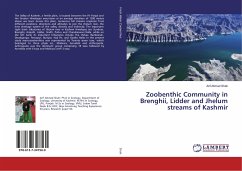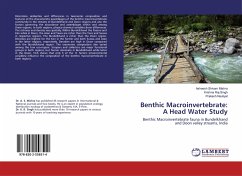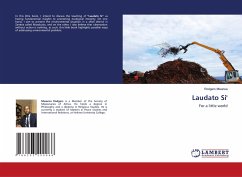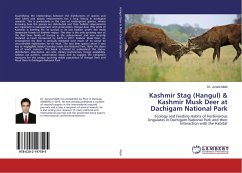
Zoobenthic Community in Brenghii, Lidder and Jhelum streams of Kashmir
Versandkostenfrei!
Versandfertig in 6-10 Tagen
46,99 €
inkl. MwSt.

PAYBACK Punkte
23 °P sammeln!
The Valley of Kashmir, a fertile plain, is located between the Pir Panjal and the Greater Himalayan mountains at an average elevation of 1200 meters above sea level. Across this plain, numerous hill streams originate from different positions, directions and altitudes to join the Jhelum river, the lone drainage system of the valley, directly and indirectly. The important right bank tributaries of Jhelum river in Kashmir Himalayas are Sundran, Brenghii, Aripath, Lidder, Sindh, Pohru and Chandanwari Nalla, while on the left bank its important tributaries include the Vishav, Rambiarah, Doodganga, ...
The Valley of Kashmir, a fertile plain, is located between the Pir Panjal and the Greater Himalayan mountains at an average elevation of 1200 meters above sea level. Across this plain, numerous hill streams originate from different positions, directions and altitudes to join the Jhelum river, the lone drainage system of the valley, directly and indirectly. The important right bank tributaries of Jhelum river in Kashmir Himalayas are Sundran, Brenghii, Aripath, Lidder, Sindh, Pohru and Chandanwari Nalla, while on the left bank its important tributaries include the Vishav, Rambiarah, Doodganga, Ferozpur, Buniyar, Haji Pir, and Goalta Nalla. In the present study macrozoobenthos was represented by Twenty seven taxa, which belonged to three phyla viz., Mollusca, Annelida and Arthropoda. Arthropoda was the dominant group comprising 18 taxa followed by Annelida with 6 taxa and Mollusca with 3 taxa.












